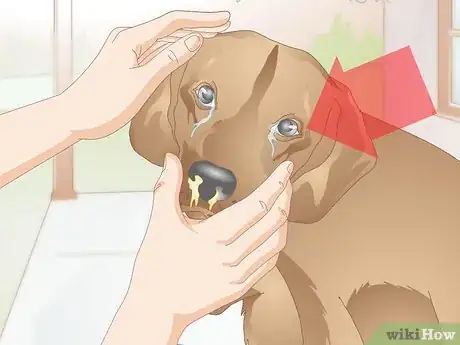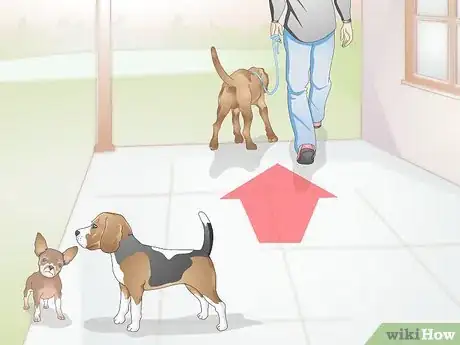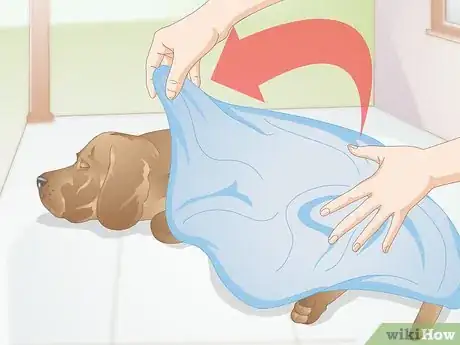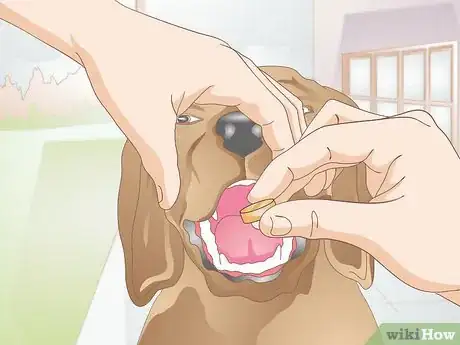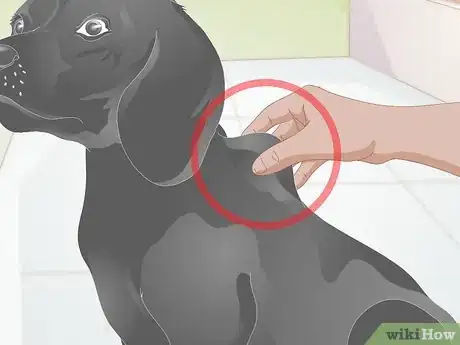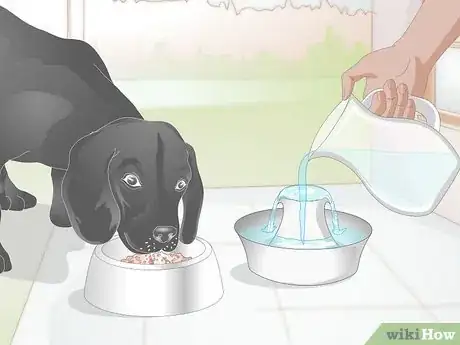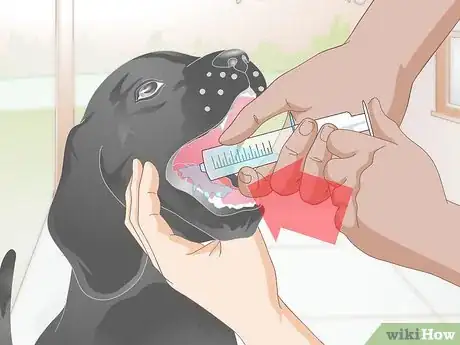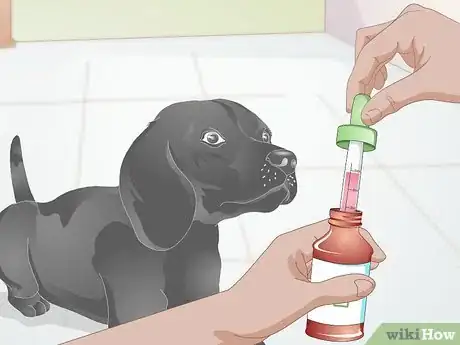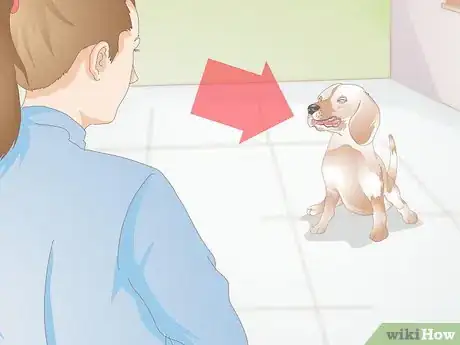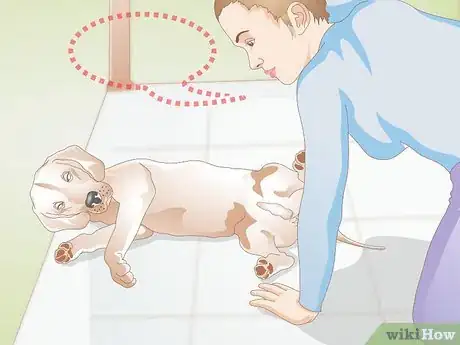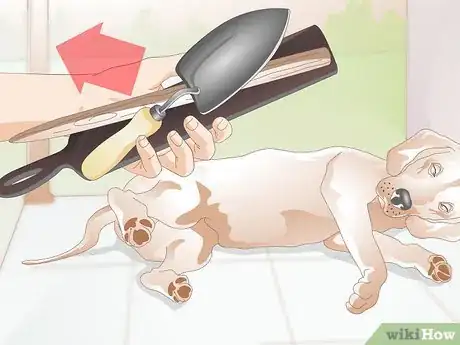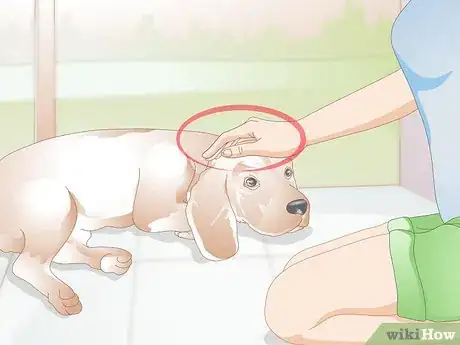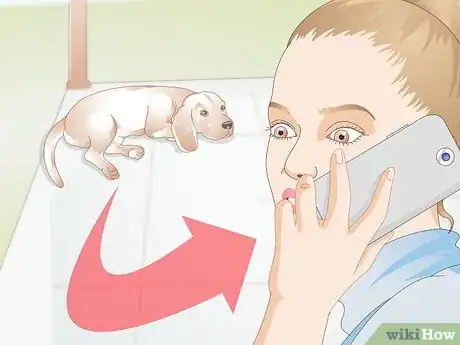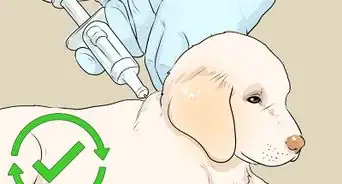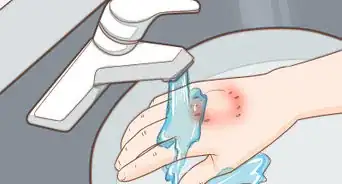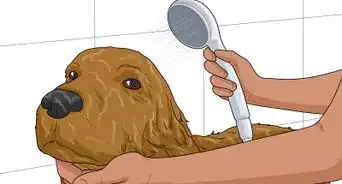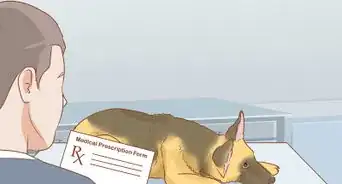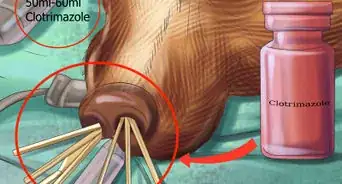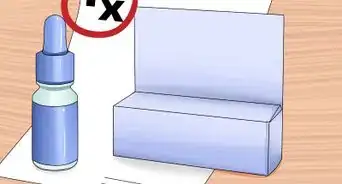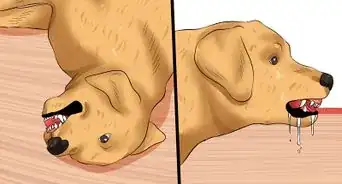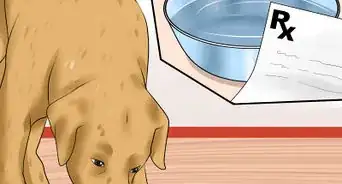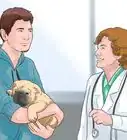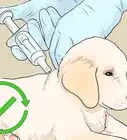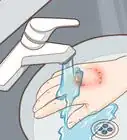This article was co-authored by Pippa Elliott, MRCVS. Dr. Elliott, BVMS, MRCVS is a veterinarian with over 30 years of experience in veterinary surgery and companion animal practice. She graduated from the University of Glasgow in 1987 with a degree in veterinary medicine and surgery. She has worked at the same animal clinic in her hometown for over 20 years.
wikiHow marks an article as reader-approved once it receives enough positive feedback. In this case, 95% of readers who voted found the article helpful, earning it our reader-approved status.
This article has been viewed 88,668 times.
Your first line of action when caring for a dog with distemper is to recognize the symptoms. Once you have recognized the symptoms in your dog, contact your vet immediately, and separate your sick dog from other pets. When treating your dog, make sure your dog is hydrated. If your dog refuses to drink, you might have to offer them water with a syringe. Finally, your dog may develop neurological problems, like seizures, in the later stages of distemper. If your dog suffers from a seizure, remain calm and comfort your dog before and after the seizure.
Steps
Diagnosing Your Dog
-
1Recognize the symptoms. The first sign of distemper in dogs is eye-discharge that can be watery to pus-like. Your dog may also develop a fever or a cough, have nasal discharge, become lethargic, vomit, have a reduced appetite, and diarrhea.[1]
- Later symptoms may include neurological problems like seizures, twitching, and partial or complete paralysis. However, these symptoms may show up earlier in puppies.
- A dog's normal temperature ranges from 99.5 to 102.5 degrees Fahrenheit. The most common signs of a fever in dogs are red eyes, lack of energy, warm ears, warm, dry nose, shivering, loss of appetite, coughing, and vomiting.
-
2Separate your dog from other dogs and animals. If you suspect that your dog is either sick or coming down with distemper, make sure to separate your dog from any other pets you own. Distemper is very contagious, and dogs usually become infected through airborne exposure. Healthy dogs can also become infected through secondhand contact, such as contact with the infected dog's toys, water and food bowls, and bedding.[2]
- Place your dog’s bed, toys, food and water bowls in a separate room. While treating your dog, confine your dog to this room to decrease contact with other pets. If you need to let your dog out, make sure your other pets are in a separate room.
Advertisement -
3Consult your veterinarian. If you identify early signs of distemper in your dog, contact your veterinarian immediately. Let the office know that you are worried your dog might be developing a case of distemper. This way, the vet can see your dog immediately. Your veterinarian will administer routine blood tests to rule out any other possibilities, and to confirm that it is distemper.
- Call the office and say, "Hi, this is Kristen. I am very worried that my dog might have distemper. My dog is showing signs of eye and nasal discharge, and I cannot get it to eat food or drink water. I would like to see the vet immediately. When can I come in?"
-
4Make sure your dog stays warm. When your dog is sick, it is important to keep it warm, especially if it has a fever and chills. Provide your dog with extra blankets to keep your dog warm. You can also fill a hot water bottle with hot water to provide extra warmth.[3]
- Wrap the hot water bottle with a cloth and place it underneath your dog’s blankets near its body.
-
5Know how your vet will treat distemper. Unfortunately, there is no cure for distemper. Therefore, treatment usually consists of supportive care, and efforts to control symptoms associated with distemper, such as dehydration, vomiting and diarrhea, and neurological problems.[4]
- Your vet will prescribe medications that can control vomiting, diarrhea, and seizures, and administer fluids if your dog becomes severely dehydrated.
Hydrating and Feeding Your Dog
-
1Know the symptoms of dehydration. Symptoms of dehydration are reduced skin elasticity, pale and dry gums, sunken eyes, concentrated urine, lethargy, and increased heart rate.[5]
- Check skin elasticity by lifting the skin between your dog’s shoulder blades. If the skin slowly springs back or stays lifted, then your dog is dehydrated to severely dehydrated.
- If your dog is severely dehydrated, take it to the vet immediately. The vet can administer fluids intravenously.
-
2Monitor your dog’s water and food intake. If you notice that your dog’s water bowl is still full after an hour or two, try placing the water bowl in front of your dog. If your dog refuses to drink, then you will need to administer fluids manually. A dog should be drinking one ounce of water for each pound of body weight. If your dog weighs 20 pounds (9.07 kg), then it should be drinking at least 20 ounces (567 grams) of water a day.[6]
- A loss of appetite is another symptom of distemper. If your dog will not eat its regular, dry food, then try feeding your dog softer, canned food. Additionally, you can try feeding your dog baby food, particularly the meats.
- If the dog is vomiting, then do not feed him.
-
3Rehydrate your dog with a syringe. If your dog refuses to drink water, you will need to rehydrate your dog manually with a syringe. You can buy a syringe from a pet supply store. Fill the syringe with water. If your dog will not open its mouth, it is ok. Just lift your dog’s lip and administer the water near the back part of the jaw and near the gums. Your dog will reflexively swallow the water.[7]
- You will need to give your dog one cup of water per 40 pounds (18.14 kg) of body weight every two to three hours.
- If your dog is also vomiting, give the water gradually in the beginning, for example, one or two tablespoons every 15 minutes.
-
4Liquefy your dog’s meals. If your dog will not eat canned food, you will need to liquefy your dog’s food and administer it with a syringe. You can liquefy canned food by blending it with water and/or milk. To make the food more appealing, you can add small amounts of smelly foods, such as liverwurst, or chicken and beef liver.[8]
- You can also feed your dog nourishing liquids, like plain chicken broth (without onions and spices). Chicken broth not only provides nutrients, but it will also hydrate your dog.
-
5Administer appetite-stimulating medication. Appetite-stimulating medication will increase your dog’s appetite. Consult your veterinarian before administering these medications. Your vet will be able to diagnose the severity of your dog’s inappetence, and prescribe an appropriate medication.
Dealing with a Seizure
-
1Recognize the symptoms of an oncoming seizure. After your dog has recovered from respiratory signs, sickness, and diarrhea, your dog might develop neurological problems like seizures, twitching, and paralysis. A common symptom of an oncoming seizure in your dog is an aura. If your dog is experiencing an aura, you will notice a change in your dog’s behavior. This period can last for seconds or hours.[9]
- For example, your dog may become more vocal, like whining or barking, shy away at nothing, become nervous, or salivate.
-
2Stay calm. If your dog is beginning to seize or experience auras, do not stress out. Instead, talk to your dog in a soothing, reassuring voice. This will comfort both you and your dog.[10]
- You can say for example, “It’s ok. I’m here. I won’t let anything bad happen to you. I will be right next to you.” While you are saying this, reassure your dog by petting it.
-
3Move sharp objects away from your dog. Your dog will not be able to control its movements during a seizure. Therefore, remove potentially sharp or dangerous objects away from your dog to prevent it from hurting itself. Also, do not put your hand in your dog’s mouth to hold down its tongue. Your dog could accidentally bite you if you do this.[11]
- Time the duration of the seizure with a watch or your phone. This will be important information that you can report to your vet. If the seizures last a long time, this can be very dangerous.
-
4Offer your dog comfort when it is over. When the episode is over, comfort your dog immediately. Your dog will be confused and disoriented. Comfort your dog by petting it and talking to it in a soothing voice. Have your dog lie down in its bed to prevent it from walking and bumping into things.[12]
- Say in a soothing voice, "You're ok. I am here for you. You'e a good girl. Everything will be ok. Don't worry."
-
5Contact your veterinarian. Tell your vet that your dog just had a seizure. They will most likely ask you to bring your dog into the office. Relate to your vet what happened during the seizure and how long it lasted. A long seizure is a seizure that lasts for one minute or longer. Your vet may prescribe a medication, or discuss other options to prevent any future seizures.[13]
- You can say, "Hi, Janice. My dog had a seizure yesterday afternoon around 2:30 p.m. Before the actual seizure, my dog began to act frightened and confused. She was whimpering. By the time I went over to see what was up, she had collapsed on her side. While on her side, her feet were moving in a circular motion. This went on for about six to eight seconds. Afterwards, she seemed very confused."
References
- ↑ https://ebusiness.avma.org/files/productdownloads/distemper_brochure.pdf
- ↑ https://ebusiness.avma.org/files/productdownloads/distemper_brochure.pdf
- ↑ https://ebusiness.avma.org/files/productdownloads/distemper_brochure.pdf
- ↑ https://www.avma.org/public/PetCare/Pages/Canine-Distemper.aspx
- ↑ https://pethelpful.com/dogs/How-to-Rehydrate-Your-Dog
- ↑ http://pets.webmd.com/dogs/guide/dog-dehydration-water-needs?page=1#5
- ↑ https://www.vetinfo.com/using-a-feeding-syringe-for-dogs.html
- ↑ https://pethelpful.com/dogs/How-to-Rehydrate-Your-Dog
- ↑ https://www.petcarerx.com/article/treating-the-symptoms-of-epilepsy-in-dogs/915
- ↑ https://www.petcarerx.com/article/treating-the-symptoms-of-epilepsy-in-dogs/915
- ↑ https://www.petcarerx.com/article/treating-the-symptoms-of-epilepsy-in-dogs/915
- ↑ https://www.petcarerx.com/article/treating-the-symptoms-of-epilepsy-in-dogs/915
- ↑ https://www.petcarerx.com/article/treating-the-symptoms-of-epilepsy-in-dogs/915
About This Article
To care for a dog with distemper, separate your dog from your other pets and contact your vet as soon as you recognize the symptoms, such as eye discharge, vomiting, and lethargy. Then, keep your dog warm with extra blankets or a hot water bottle in its bedding. Additionally, provide plenty of drinking water, or give it water with a syringe if it refuses to drink, so that it doesn't become dehydrated. Alternatively, feed your dog chicken broth, which provides nutrients and keeps your dog hydrated at the same time. For advice from our Veterinary reviewer on how to deal with seizures caused by distemper, read on!
